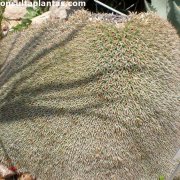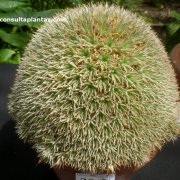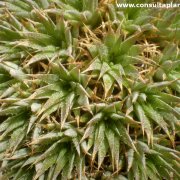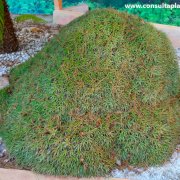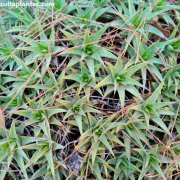Care of the succulent plant Deuterocohnia brevifolia or Tillandsia chlorantha |
|
The genus Deuterocohnia, family Bromeliaceae, includes 18 species of bromeliads native to Brazil, Bolivia and Chile. Some species are: Deuterocohnia brevifolia, Deuterocohnia lorentziana, Deuterocohnia chrysantha, Deuterocohnia meziana, Deuterocohnia scapigera. Scientific synonyms: Tillandsia chlorantha, Abromeitiella brevifolia. They are dwarf bromeliads of terrestrial growth (not epiphytes) that form compact-looking colonies that reach 1.50 meters (4.92 feet) in width. They have 3 cm (1.18") long triangular leaves arranged in a rosette and green or greenish gray. The flowers are small and green but not very decorative. Tillandsia chlorantha is used in rockery and in pots (wider than tall) indoors, on terraces, balconies or greenhouses. Deuterocohnia brevifolia can grow in full sun or light shade exposure. In winter it is better that the temperature is not below 4 ºC (39.2 ºF). Abromeitiella brevifolia can be grown in any well-drained soil: rocky, poor, or dry. Water moderately as they resist drought very well. In spring and summer water regularly but waiting until the substrate has completely dried. In autumn reduce watering a lot and in winter do not water. Fertilize in spring with mineral fertilizer for succulents but at half the dose recommended by the manufacturer. Tillandsia chlorantha does not need pruning. If there is no excess humidity, Deuterocohnia brevifolia do not present problems of pests and diseases. Abromeitiella brevifolia propagates by division because the seeds are not easy to get. |
Images of the succulent plant Deuterocohnia brevifolia or Tillandsia chlorantha |
Find plants
Deuterocohnia brevifolia or Tillandsia chlorantha | Care and Growing
© 2026 FavThemes
